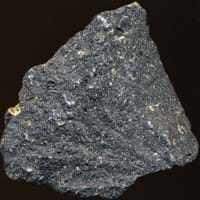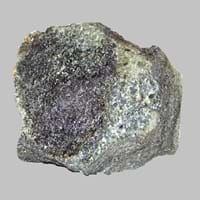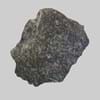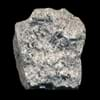Definition
Basalt is a common extrusive igneous rock formed by the rapid cooling of basaltic lava exposed at or very near the surface of Earth
Amphibolite can be defined as a granular metamorphic rock which mainly consist of hornblende and plagioclase
Discoverer
Georgius Agricola
Alexandre Brongniart
Etymology
From Late Latin Basaltes (variant of basanites ), very hard stone, which was imported from Ancient Greek Basanites
From Amphibole + -ite
Class
Igneous Rocks
Metamorphic Rocks
Sub-Class
Durable Rock, Medium Hardness Rock
Durable Rock, Hard Rock
Group
Volcanic
Not Applicable
Other Categories
Fine Grained Rock, Opaque Rock
Coarse Grained Rock, Medium Grained Rock, Opaque Rock
Texture
Glassy, Massive, Porphyritic, Scoriaceous, Vesicular
Banded, Foliated, Massive
Color
Black, Brown, Light to Dark Grey
Black, Brown, Green, Grey
Durability
Durable
Durable
Scratch Resistant
Yes
Yes
Appearance
Dull and Soft
Foliated
Interior Uses
Floor Tiles, Homes, Hotels, Kitchens
Countertops, Decorative Aggregates, Entryways, Floor Tiles, Flooring, Homes, Hotels, Kitchens
Exterior Uses
As Building Stone, Paving Stone, Garden Decoration, Office Buildings
As Building Stone, As Facing Stone, Paving Stone, Office Buildings
Other Architectural Uses
Curbing, Whetstones
Curbing
Construction Industry
Arrowheads, As Dimension Stone, Cobblestones, Cutting Tool, Rail Track Ballast, Roadstone
As Dimension Stone, Building houses or walls, Cobblestones, Construction Aggregate, for Road Aggregate, Landscaping, Production of Glass and Ceramics, Roadstone
Medical Industry
Not Yet Used
Not Yet Used
Antiquity Uses
Artifacts, Monuments
Artifacts, Sculpture, Small Figurines
Commercial Uses
An Oil and Gas Reservoir, Commemorative Tablets, Creating Artwork, Used in aquariums
Cemetery Markers, Commemorative Tablets, Creating Artwork
Types
Alkaline Basalt, Boninite, High Alumina Basalt, Mid Ocean Ridge Basalt (MORB), Tholeiitic Basalt, Basaltic trachyandesite, Mugearite and Shoshonite
Hornblendite
Features
Has High structural resistance against erosion and climate, Very fine grained rock
Clasts are smooth to touch, Matrix variable, Surfaces are often shiny
Archaeological Significance
Famous Monuments
Easter Island in the Polynesian Triangle, Pacific Ocean, Gateway of India in Mumbai, India, Gol Gumbaz in Karnataka, India
Data Not Available
Famous Sculptures
Data Not Available
Data Not Available
Pictographs
Used
Not Used
Petroglyphs
Used
Not Used
Formation
Basalt forms when lava reaches the Earth's surface near an active volcano. The temperature of lava is between 1100 to 1250° C when it gets to the surface.
Amphibolite is a coarse-grained metamorphic rock which forms by metamorphism of mafic igneous rocks like basalt and gabbro or from the metamorphism of clay-rich sedimentary rocks like marl or graywacke.
Mineral Content
Olivine, Plagioclase, Pyroxene
Amphibole, Andalusite, Biotite, Calcite, Epidote, Garnet, Hornblade, Kyanite, Magnetite, Olivine, Plagioclase, Pyroxene, Staurolite, Wollastonite
Compound Content
Aluminium Oxide, CaO, Iron(III) Oxide, FeO, Potassium Oxide, MgO, MnO, Sodium Oxide, Phosphorus Pentoxide, Silicon Dioxide, Titanium Dioxide
Aluminium Oxide, CaO, Iron(III) Oxide, FeO, Potassium Oxide, MgO, MnO, Sodium Oxide, Phosphorus Pentoxide, Silicon Dioxide, Titanium Dioxide
Types of Metamorphism
Contact Metamorphism
Not Applicable
Types of Weathering
Biological Weathering
Chemical Weathering, Mechanical Weathering
Types of Erosion
Not Available
Chemical Erosion, Glacier Erosion, Sea Erosion, Wind Erosion
Grain Size
Fine Grained
Medium to Coarse Grained
Fracture
Conchoidal
Irregular to Conchoidal
Streak
White to Grey
White to Grey
Porosity
Less Porous
Less Porous
Luster
Not Available
Vitreous to Dull
Compressive Strength
Not Available
Cleavage
Not Available
Irregular
Specific Gravity
2.8-3
2.5
Transparency
Opaque
Opaque
Density
2.9-3.1 g/cm3
2.85-3.07 g/cm3
Specific Heat Capacity
Not Available
Resistance
Heat Resistant, Pressure Resistant, Wear Resistant
Heat Resistant, Pressure Resistant, Wear Resistant
Deposits in Eastern Continents
Asia
India, Russia
Russia, Turkey
Africa
South Africa
Burundi, Djibouti, Eritrea, Ethiopia, Kenya, Madagascar, Rwanda, Somalia, South Africa, Sudan, Tanzania, Uganda
Europe
Iceland
Germany, Greece, Iceland, Norway, Poland
Others
Not Yet Found
Not Yet Found
Deposits in Western Continents
North America
Canada, USA
Canada, USA
South America
Brazil
Brazil
Deposits in Oceania Continent
Australia
Not Yet Found
South Australia, Western Australia
Basalt vs Amphibolite Characteristics
Though some rocks look identical, they have certain characteristics which distinguish them from others. Characteristics of rocks include texture, appearance, color, fracture, streak, hardness etc. Basalt vs Amphibolite characteristics assist us to distinguish and recognize rocks. Also you can check about Properties of Basalt and Properties of Amphibolite. Learn more about Basalt vs Amphibolite in the next section. The interior uses of Basalt include Floor tiles, Homes, Hotels and Kitchens whereas the interior uses of Amphibolite include Countertops, Decorative aggregates, Entryways, Floor tiles, Flooring, Homes, Hotels and Kitchens. Due to some exceptional properties of Basalt and Amphibolite, they have various applications in construction industry. The uses of Basalt in construction industry include Arrowheads, As dimension stone, Cobblestones, Cutting tool, Rail track ballast, Roadstone and that of Amphibolite include As dimension stone, Building houses or walls, Cobblestones, Construction aggregate, For road aggregate, Landscaping, Production of glass and ceramics, Roadstone.
More about Basalt and Amphibolite
Here you can know more about Basalt and Amphibolite. The life cycle of a rock consists of formation of rock, composition of rock and transformation of rock. The composition of Basalt and Amphibolite consists of mineral content and compound content. The mineral content of Basalt includes Olivine, Plagioclase, Pyroxene and mineral content of Amphibolite includes Amphibole, Andalusite, Biotite, Calcite, Epidote, Garnet, Hornblade, Kyanite, Magnetite, Olivine, Plagioclase, Pyroxene, Staurolite, Wollastonite. You can also check out the list of all Igneous Rocks. When we have to compare Basalt vs Amphibolite, the texture, color and appearance plays an important role in determining the type of rock. Basalt is available in black, brown, light to dark grey colors whereas, Amphibolite is available in black, brown, green, grey colors. Appearance of Basalt is Dull and Soft and that of Amphibolite is Foliated. Properties of rock is another aspect for Basalt vs Amphibolite. The hardness of Basalt is 6 and that of Amphibolite is 6-7. The types of Basalt are Alkaline Basalt, Boninite, High Alumina Basalt, Mid Ocean Ridge Basalt (MORB), Tholeiitic Basalt, Basaltic trachyandesite, Mugearite and Shoshonite whereas types of Amphibolite are Hornblendite. Streak of rock is the color of powder produced when it is dragged across an unweathered surface. The streak of Basalt and Amphibolite is white to grey. The specific heat capacity of Basalt is 0.84 kJ/Kg K and that of Amphibolite is Not Available. Depending on the properties like hardness, toughness, specific heat capacity, porosity etc., rocks are resistant to heat, wear, impact, etc.Basalt is heat resistant, pressure resistant, wear resistant whereas Amphibolite is heat resistant, pressure resistant, wear resistant.





